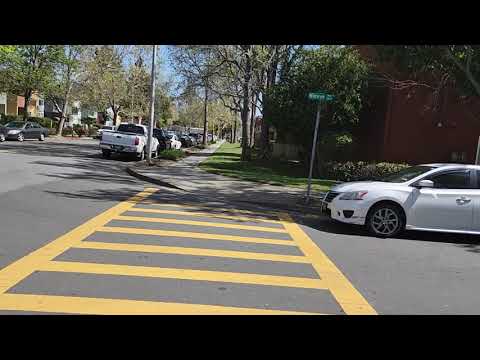CARESONO-M2 Portable Bladder Scanner, non invasive bladder instrument @caresonotechnologyco
#m2 #portable #blader #scaner #noninvasive #bladder #instrument @KaiserPermanente @StanfordHealth @GenomiRX


0 likes, 0 comments - drhowardsmithreports on February 12, 2025: "Your Eyeballs Predict Your Stroke Risk The pattern of blood vessels at the back of your eyes, in your retinas, could be an early warning sign that your risk of stroke may be up to 20% higher than normal. So say research ophthalmologists at Australia’s Royal Victorian Eye and Ear Hospital working with colleagues at Harvard’s Mass.Eye and Ear Infirmary. The eye’s retina is the only part of the body offering a direct view of your blood vessels. Observing vascular patterns in the eyes of some 45,161 subjects followed over 12.5 years, the investigators discovered 29 indicators linked to increased stroke risk. Significant changes in these indicators predicted an increased risk of stroke from 9.8 to 19%. This retinal vascular analysis appears to more predictive of strokes than more conventional non-invasive methods. With further refinement, it can only improve. https://heart.bmj.com/content/early/2025/01/03/heartjnl-2024-324705 #retina #stroke #screeing #noninvasive #australia #boston".
SciTech Chronicles. . . . . . . . . . . . . . . . . . . . .Jan 19, 2025
#heart #muscle #noninvasive #extracellular #intracellular #Upcycling #polymer #ruthenium #metathesis #CRISPR #cognitive #neuroscience #meta-analysis #HIT #executive-functioning #Perplexity #TikTok #merger #ByteDance #no-sale #1.69AU #8x #simulations #1% #flyby
German technology start-up Quantune Technologies has successfully secured seed funding. Quantune promises to revolutionize the way we monitor and manage health, bringing cutting-edge technology to the forefront of healthcare.
#Wearables #NonInvasive #DiabetesPrevention #HealthTech #Quantune
The #Military Is Developing a Helmet That Will Allow Fighter Pilots to Maneuver Their Jets—& #FireWeapons—By Just Thinking About It.
A #noninvasive, #neurologicallink would in theory let pilots carry out sophisticated tasks instantly.
https://www.popularmechanics.com/military/a62719626/darpa-n3-ai-helmet/
Liquid Biopsies: A New Frontier in Cancer Detection
Discover how liquid biopsies are transforming cancer diagnosis, offering early detection, non-invasive procedures, and personalized treatment plans. Learn about the benefits and advancements in this promising field.
https://mrmedonlinepharmacy.mystrikingly.com/blog/liquid-biopsies-a-new-frontier-in-cancer-detection
#liquidbiopsy #cancerdetection #earlydiagnosis #noninvasive #personalizedtreatment #healthcare
Among these, laser skin tightening has emerged as a popular choice for those seeking to combat signs of aging and restore youthful firmness to their skin.
https://retroworldnews.com/essential-information-on-laser-skin-tightening-what-you-need-to-know/
#LaserSkinTightening #SkinCare #BeautyTreatment #YouthfulSkin #CosmeticProcedure #SkinRejuvenation #AntiAging #SkinHealth #Dermatology #BeautyTips #SkinClinic #CollagenProduction #FirmSkin #NonInvasive #HealthySkin #SkinGoals #BeautyRoutine #SkinTighteningTreatment #YouthfulAppearance #ConfidenceBoost #beauty #skin
Interested in #Noninvasive Diagnostics in HPB imaging?
This brand-new study from Alicia Furumaya et al. identified imaging characteristics aimed at differentiating between focal nodular hyperplasia (FNH) and hepatocellular adenoma and carcinoma (HCA/HCC).
Objectives Hyper- or isointensity in the hepatobiliary phase (HBP) of gadoxetic acid-enhanced MRI has high specificity for focal nodular hyperplasia (FNH) but may be present in hepatocellular adenoma and carcinoma (HCA/HCC). This study aimed to identify imaging characteristics differentiating FNH and HCA/HCC. Materials and methods This multicenter retrospective cohort study included patients with pathology-proven FNH or HCA/HCC, hyper-/isointense in the HBP of gadoxetic acid-enhanced MRI between 2010 and 2020. Diagnostic performance of imaging characteristics for the differentiation between FNH and HCA/HCC were reported. Univariable analyses, multivariable logistic regression analyses, and classification and regression tree (CART) analyses were conducted. Sensitivity analyses evaluated imaging characteristics of B-catenin-activated HCA. Results In total, 124 patients (mean age 40 years, standard deviation 10 years, 108 female) with 128 hyper-/isointense lesions were included. Pathology diagnoses were FNH and HCA/HCC in 64 lesions (50%) and HCA/HCC in 64 lesions (50%). Imaging characteristics observed exclusively in HCA/HCC were raster and atoll fingerprint patterns in the HBP, sinusoidal dilatation on T2-w, hemosiderin, T1-w in-phase hyperintensity, venous washout, and nodule-in-nodule partification in the HBP and T2-w. Multivariable logistic regression and CART additionally found a T2-w scar indicating FNH, less than 50% fat, and a spherical contour indicating HCA/HCC. In our selected cohort, 14/48 (29%) of HCA were B-catenin activated, most (13/14) showed extensive hyper-/isointensity, and some had a T2-w scar (4/14, 29%). Conclusion If the aforementioned characteristics typical for HCA/HCC are encountered in lesions extensively hyper- to isointense, further investigation may be warranted to exclude B-catenin-activated HCA. Clinical relevance Hyper- or isointensity in the HBP of gadoxetic acid-enhanced MRI is specific for FNH, but HCA/HCC can also exhibit this feature. Therefore, we described imaging patterns to differentiate these entities. Key Points FNH and HCA/HCC have similar HBP intensities but have different malignant potentials. Six imaging patterns exclusive to HCA/HCC were identified in this lesion population. These features in liver lesions hyper- to isointense in the HBP warrant further evaluation.